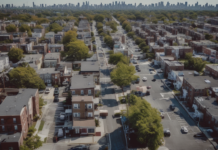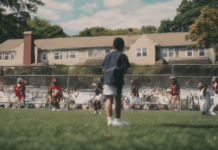If you’re comparing Queens vs Brooklyn: Cost of Living for Indian Immigrants in 2024, expect a typical two-bedroom flat in Jackson Heights, Queens to cost around $2,600 per month, while a similar place in Kensington, Brooklyn can reach $3,000—plus higher monthly utilities in Brooklyn by $50-100.
As of November 2024, rents in both boroughs have surged by at least 7% since last year, making the choice between them even more consequential for newcomers. An insider tip: Indian groceries and cultural amenities are more concentrated and affordable in Queens, especially around 74th Street, meaning you’ll spend less on daily essentials and commute time if you settle there. However, Brooklyn’s neighbourhoods like Ditmas Park offer slightly larger living spaces and quicker subway routes to Manhattan, which can be a deciding factor if you work in the city. The challenge for Indian immigrants is balancing familiar community comforts with realistic budget constraints, especially since security deposits now commonly require 1.5 months’ rent upfront in both boroughs.
This guide delivers a practical, current breakdown of Queens vs Brooklyn: Cost of Living for Indian Immigrants, including:
- Exact rent ranges and average utility costs in key Indian neighbourhoods
- Up-to-date grocery, transport, and childcare expenses
- Tips on saving money while maintaining cultural connections in either borough
Read on for clear figures, real-life examples, and the actionable details you need to make your NYC move confidently and affordably.
Overview of Cost of Living in Queens and Brooklyn
Navigating the Queens vs Brooklyn: Cost of Living for Indian Immigrants debate in 2024 is practically a rite of passage if you’re new to NYC. Jackson Heights in Queens and Kensington or Brighton Beach in Brooklyn remain Indian and Indonesian community hubs, but the price tags differ as much as the subway lines that take you there. As of early 2024, average monthly rents for a modest two-bedroom flat in Jackson Heights hover around $2,400, while similar Brooklyn options—think Sunset Park or Midwood—push closer to $2,800. Don’t let the difference fool you: Brooklyn often means longer commutes and pricier groceries (unless you’re trekking to Patel Brothers on Coney Island Avenue).
💡 Pro Tip:
If proximity to Indian supermarkets and temples is your priority, Queens (especially near the 74th St–Broadway/Roosevelt Ave station) is hard to beat. The 7 train is lifeblood here, though it gets packed during rush hour.
📍 Quick Reference Box:
- Jackson Heights: Indian restaurants, temples, grocery stores, 7/E/F trains
- Kensington: More space, quieter.
- Brighton Beach:
The cost of groceries is a constant refrain for recent arrivals. Most Indian and Indonesian immigrants find staples—rice, spices, lentils—cheaper in Queens, thanks to the fierce competition along 74th Street. In Brooklyn, expect to shell out a bit more or travel for better deals.
⚠️ Watch Out:
Some smaller grocery shops in Brooklyn close early (by 8pm), while Queens’s Indian markets often stay open until 10pm—handy for late-night cooks.
Comparison of Housing Costs for Indian Immigrants
Living in New York can feel like a full-time hustle, especially for Indian and Indonesian immigrants weighing up the Queens vs Brooklyn: Cost of Living for Indian Immigrants dilemma. Let’s not sugarcoat it: 2024 is no bargain year. Rents are up, groceries aren’t getting cheaper, and navigating boroughs is an art form. The biggest question for newcomers? Whether Queens or Brooklyn will give you the most bang for your buck—without sacrificing community, convenience, or the little comforts that remind you of home.
Both boroughs have thriving Indian communities—think Jackson Heights in Queens, or pockets of Kensington and Midwood in Brooklyn. But the daily costs can surprise you if you’re not prepared. As of early 2024, a one-bedroom in Jackson Heights hovers around $1,950/month, while in Kensington, Brooklyn, expect $2,100+. Add MetroCard travel, groceries, and the odd trip for cricket at Marine Park, and it stacks up. The cultural heart in both boroughs beats strong, but the price tag might sway your decision.
📋 What You’ll Need – Checklist:
✓ Valid ID for lease
✓ Security deposit (1-2 months’ rent)
✓ Proof of income/guarantor
Both areas offer easy subway access—the 7 train for Queens, B/Q/F trains for Brooklyn. Grocery shops with imported spices line Roosevelt Avenue, while Church Avenue in Flatbush boasts its own flavour. But don’t just look at rents; factor in commute time, cost of Indian groceries, and how close you want to be to major temples or mosques.
💡 Community Tip:
Most Indian families in Queens find the Jackson Heights–Roosevelt Avenue station (E/F/M/R/7 lines) more central for daily needs, while Brooklyn’s Coney Island Avenue is a hotspot for fresh produce and regional snacks.
Cost of Food, Transportation, and Utilities in Queens and Brooklyn
For anyone new to New York, especially Indian and Indonesian immigrants, the real battle isn’t just understanding the subway map—it’s the Queens vs Brooklyn: Cost of Living for Indian Immigrants debate. Ask anyone who’s spent years chasing deadlines in both boroughs: your dollar stretches differently depending on whether you’re looking for a dosa in Jackson Heights or a curry in Kensington. As of early 2024, rents have crept up in both boroughs, but the hidden costs are what catch most newcomers off guard—laundry, groceries, and even that monthly MetroCard. If you want a shortcut to settling in, understanding how far your rupee or rupiah goes in each neighbourhood is absolutely crucial.
Most Indian and Indonesian families in Queens cluster around Jackson Heights (Roosevelt Ave/74th St-Broadway Station), where a one-bedroom flat might run you $2,100–$2,400/month. In Brooklyn’s Kensington or Flatbush (Church Ave station), expect $2,300–$2,600 for a similar space. But price tags aren’t the whole story—community, commute, and cuisine options also factor in.
📋 What You’ll Need – Flat-Hunting Checklist:
✓ Latest pay slips or proof of income
✓ Bank account with a local branch (Chase, Citi, etc.)
✗ Forgetting your previous landlord’s reference (a common stumbling block)
💡 Local Tip: Jackson Heights’ 74th Street corridor has fresh produce markets open till 10pm—much cheaper than big-box stores further west. If you’re working odd hours, this is a game-changer.
Factors Affecting Living Expenses in Queens and Brooklyn
If you’re weighing up where to plant roots in NYC, the Queens vs Brooklyn: Cost of Living for Indian Immigrants debate is as old as the 7 train’s morning delays. Most newcomers—especially from India or Indonesia—land first in Jackson Heights or Kensington, eyeing affordability and community. As of early 2024, Queens edges out Brooklyn on rent and daily costs, but both boroughs have their quirks. A basic one-bedroom in Jackson Heights hovers around $2,200, while Kensington or Sunset Park inches closer to $2,500. But costs are only half the story; neighbourhood vibe, transit, and proximity to markets matter just as much.
📋 What You’ll Need – Quick Checklist:
✓ Proof of income (3 recent payslips or offer letter)
✓ ID/passport
✓ Good credit score (650+)
✗ Ignoring broker’s fees—most charge 1 month’s rent upfront
Local groceries in Queens, especially around 74th Street, are plentiful and noticeably cheaper than Brooklyn’s gentrified enclaves. Expect $1.50 for fresh coriander at Patel Brothers, compared to $2.25 at Park Slope Food Coop. The Indonesian community often clusters around Elmhurst, where you’ll hear Bahasa on the R or M trains, while Indian families lean towards Jackson Heights or Richmond Hill.
💡 Pro Tip:
If you’re working odd hours, the E/F/M/R lines from Roosevelt Avenue run 24/7—vital for late shifts or airport jobs in Queens.
Public transit is the lifeblood of NYC. In Queens, the 7 and E trains are constant companions, while Brooklynites rely on the F, D, and N lines. A monthly MetroCard is $132 as of January 2025. The Queens office at 39-07 Prince St, Flushing (close to the 7 train) processes
Tips for Choosing Between Queens and Brooklyn for Indian Immigrants
When it comes to the Queens vs Brooklyn: Cost of Living for Indian Immigrants debate, experience tells you that assumptions can quickly drain your wallet. Jackson Heights in Queens and Kensington or Brighton Beach in Brooklyn each offer unique pros and cons for Indian and Indonesian newcomers trying to get a foothold in New York City in 2024. Some nights, the 7 train out of 74th Street feels like a lifeline—until you start comparing actual rent receipts, grocery bills, and the cost of that daily MetroCard swipe.
As of April 2024, a one-bedroom in Jackson Heights hovers around $2,200/month, while comparable places in Kensington average $2,000. But those numbers are only half the story. Factor in utilities, groceries at Patel Brothers, and commutes on the F or 7 lines, and the real cost emerges. New arrivals often underestimate just how quickly “affordable” neighbourhoods add up—especially with family-sized flats and school catchment areas in play.
- Queens:
- Brooklyn:
- Easy subway access (7.
- Densely packed
Most people find Queens offers richer South Asian food options and larger communities, but Brooklyn can mean quieter streets for families and easier access to Coney Island’s open spaces. Transit-wise, the 7 train rarely sleeps, but the F and Q offer more direct routes to Manhattan jobs.
✓ Proof of income (3 months bank statements)
✓ First month + security deposit
✓ MetroCard (weekly/monthly unlimited recommended)
✗ Forgetting to budget for internet and laundry
Essentials like tiffin services, halal meat, and even Indonesian groceries are a short walk in both boroughs, but prices vary. As of January 2025, a weekly tiffin costs $45–$70 in Jackson Heights; in Brighton Beach, similar services may run $55–$80 because of fewer providers. Utilities average $150/month in both boroughs, though older Brooklyn buildings can have unpredictable heating costs—especially in winter.
You now have a clearer understanding of the cost differences between Queens and Brooklyn for Indian immigrants in 2024. This knowledge can help you make informed decisions about where to settle based on your budget and lifestyle preferences, potentially saving you time and money in the process.
Your first step is to evaluate your financial priorities and determine which borough aligns best with your housing and living expenses. Consider visiting neighbourhoods, speaking with residents, and exploring local amenities before making a final choice.
Have you got any questions or need further guidance on neighbourhood options? Share your thoughts in the comments below. For more detailed tips on settling in NYC, check our comprehensive guide on indonewyork.com.














